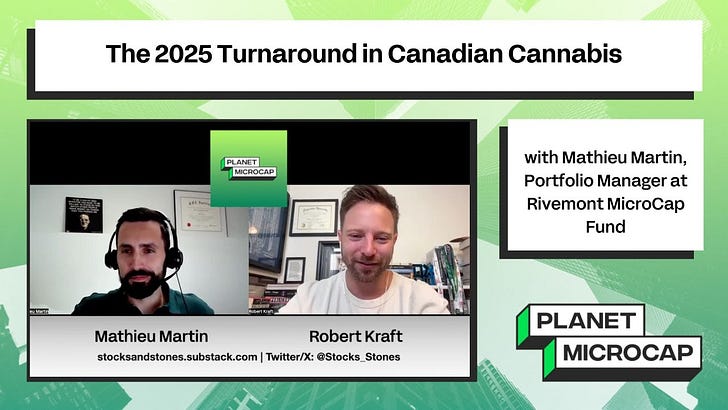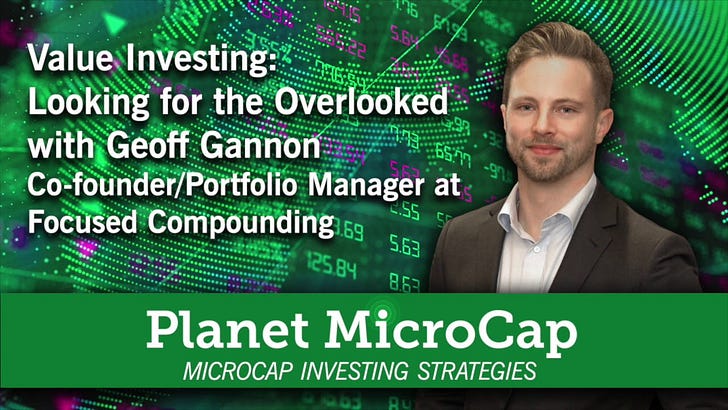My guests on the show today are Anthony Perala and James Hannack, Research Analysts at Punch & Associates. Anthony and James recently returned from a multi-city due diligence trip across Western Canada, and in this episode, they walk us through what they learned — not just about specific companies, but about the power of seeing businesses up close.
We talk about why in-person research still matters, especially in microcaps where management access, company culture, and operational visibility aren’t always obvious on paper or a Zoom screen. They share how walking factory floors, reading body language, and noticing office details can shape conviction and surface red flags in ways spreadsheets simply can’t.
Anthony and James also explain why Calgary and Vancouver are becoming regular stops on their research itinerary, how they prepare for and structure field visits, and how they filter insights once they’re back at the desk. We also cover common pitfalls, lessons learned, and what separates candid management teams from those just giving the “IR version” of the story.
If you’ve ever questioned whether boots-on-the-ground research still adds value in today’s data-rich environment — this episode makes a compelling case that it does.
For more information about Punch & Associates, please visit:
Watch on YouTube:
Summary:
This podcast summarizes a recent due diligence trip to Canada undertaken by Anthony Perala and James Hannack, Research Analysts at Punch & Associates. The discussion highlights the critical importance of on-the-ground due diligence in microcap investing, emphasizing qualitative insights gained from in-person interactions and site visits over traditional conference meetings or virtual calls. Key takeaways include the value of candid conversations with management, observing company culture firsthand, and the unique opportunities found in under-followed markets like Western Canada.
The Rationale for On-the-Ground Due Diligence
Punch & Associates, a value-oriented microcap investment firm, places significant emphasis on qualitative factors beyond just valuation and fundamentals. Their process centers on identifying and trusting management teams to drive business growth over a 3–5-year horizon. This necessitates developing strong relationships, best fostered through in-person engagement.
Beyond Rehearsed Interactions: Conferences and Zoom calls often feature "rehearsed mode" management. In-person visits to company facilities or headquarters provide unique insight into how management teams operate in their own environment, allowing for more candid and balanced conversations about both opportunities and challenges.
Observing Company Culture and Management Style: Site visits reveal subtle yet crucial insights into company culture. Analysts notice whether the CEO engages with employees, the condition and style of the offices, and how employees interact—adding to a holistic picture of management as operators and people.
Benchmarking and Efficiency: Facility tours allow for real-time operational benchmarking. Observations of cleanliness, automation, and organization provide tangible data to assess efficiency and opportunities for improvement.
Connecting with the "Real World": These visits transform companies from "numbers on a screen" to tangible businesses. This connection enhances the appreciation for operational complexity and management capability.
Building Trust and Respect: Management teams value the effort involved in site visits, recognizing the investor’s interest in their life’s work and reinforcing long-term alignment.
Strategic Focus: Canadian Microcap Market
The focus on Western Canada—particularly Calgary and Vancouver—was strategic and rooted in the firm's "fish where the fish are" philosophy:
Attractive Valuations: Canadian companies with strong unique selling propositions often trade at discounts to U.S. counterparts.
Geographic Proximity & Operational Overlap: Many Canadian companies operate extensively in the U.S., making them relevant to U.S.-based funds. Proximity to Minneapolis also makes logistics simpler.
"Unloved" and Candid Management: Western Canada, especially Calgary, is seen as less polished and more candid than Toronto. This aligns with Punch’s preference for practical, under-the-radar companies.
Portfolio Concentration: The trip was triggered by a few concentrated holdings in Calgary where management had not yet been met in person.
Efficient Itinerary Expansion: Proximity between Calgary and Vancouver allowed for additional visits to owned and watchlist companies.
Growing Canadian Exposure: The Canadian portion of the portfolio has grown over the last year, now comprising 10–20% of some strategies.
Pre-Trip Preparation and Objectives
Preparation was critical to the trip’s success:
Defining the "Why": The team outlined the purpose of each visit and what insights they aimed to gather.
Identifying Targets: The itinerary included a mix of owned, watchlist, and new companies based in the region.
Formulating Key Questions: Objectives included evaluating:
Industry sentiment, especially around oil and gas in Calgary.
Management’s fit and ability to scale into larger roles.
Institutional readiness for scrutiny.
Deeper understanding of specific business models and facilities.
Managing Expectations: The analysts acknowledged limitations in technical knowledge but aimed to understand operational logic and context.
During the Trip: Maximizing Insights
Team Approach: With two analysts, one led questioning while the other followed up and observed, helping to avoid groupthink.
Critical Follow-Up Questions: Questions about capital allocation, product strategy, and deal pipelines were used to uncover substance behind the story.
Preparation as a Defense: Being well-prepared discouraged management from resorting to overly optimistic narratives.
Observing Unspoken Cues:
Office Environment: Details like office design and maintenance hinted at company culture and spending habits.
Industry Sentiment: Being physically present allowed for real-time feedback about regulatory and macroeconomic conditions in Canadian energy markets.
Post-Trip Workflow and Integration of Findings
Immediate Summarization: Upon return, analysts provided short bullet-point summaries for each meeting, including a rough rating (buy, sell, hold).
Detailed Notes and Verification: Follow-up included full note writing, fact-checking, and reconciliation of any discrepancies.
PM Consultation: Portfolio managers prioritized names for further action or analysis based on post-trip impressions.
Guiding Future Research: Insights from meetings inform future diligence and capital allocation decisions.
Ongoing Due Diligence: Visits inform continuous monitoring and deepen understanding of long-held positions.
Post-Event Communication:
For owned names: meetings typically ended with appreciation and reinforcement of partnership.
For new names: follow-ups were deferred unless immediate action was required. No formal thank-you emails unless needed.
Candor and Transparency: Punch is clear about their long-only, long-term philosophy, and their methodical approach to building positions over time.
Lessons Learned and Future Implementation
Continuous Improvement in Questioning: Post-trip reflections include identifying areas for better follow-up and incorporating PM feedback.
Compounding Nature of Interactions: Repeated exposure to management and operations builds context and confidence over time.
Logistical Optimization: Calgary’s compact geography allows for denser scheduling in future visits.
Addressing Disappointments: One key facility tour was missed, emphasizing the importance of balancing time and access in trip planning.
Cultural Awareness: Staying current on local culture—like NHL playoffs—can enhance rapport-building during meetings.
Planet MicroCap Podcast is on YouTube! All archived episodes and each new episode will be posted on the Planet MicroCap YouTube channel. I’ve provided the link in the description if you’d like to subscribe. You’ll also get the chance to watch all our Video Interviews with management teams, educational panels from the conference, as well as expert commentary from some familiar guests on the podcast.
Subscribe here: http://bit.ly/1Q5Yfym
Click here to rate and review the Planet MicroCap Podcast
The Planet MicroCap Podcast is brought to you by SNN Incorporated, The Official MicroCap News Source, and the Planet MicroCap Review Magazine, the leading magazine in the MicroCap market.
You can Follow the Planet MicroCap Podcast on Twitter @BobbyKKraft












Share this post